- Clone
- 2E9/CCL5 (See other available formats)
- Regulatory Status
- RUO
- Other Names
- CCL5, SISd, Scya5, RANTES, TCP228
- Isotype
- Mouse IgG2b, κ
- Ave. Rating
- Submit a Review
- Product Citations
- publications
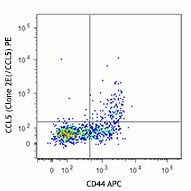
-

Overnight cultured C57BL/6 splenocytes were stained with CD8α, CD3, and CD44. Then, they were fixed, permeabilized, and intracellularly stained with CCL5 (clone 2E9/CCL5) PE (top image) or mouse IgG2b, κ PE (bottom image) isotype control. Data shown is gated on CD8α+ CD3+ population. -

| Cat # | Size | Price | Quantity Check Availability | Save | ||
|---|---|---|---|---|---|---|
| 149103 | 25 µg | 123€ | ||||
| 149104 | 100 µg | 268€ | ||||
Chemokine (C-C motif) ligand 5 (CCL5), also known as regulated on activation, normal T cell expressed and secreted (RANTES), is a 10 kD protein primarily produced by CD8+ T cells. CCL5 can also be secreted by platelets, dendritic cells (DCs), and fibroblasts. CCL5 functions as a chemoattractant for T cells, monocytes, and eosinophils through binding of its receptor, CCR5. CCL5 can inhibit binding of HIV-1 to CCR5 and inhibit HIV-1 entry.
Product DetailsProduct Details
- Verified Reactivity
- Mouse
- Antibody Type
- Monoclonal
- Host Species
- Mouse
- Immunogen
- Recombinant CCL5
- Formulation
- Phosphate-buffered solution, pH 7.2, containing 0.09% sodium azide.
- Preparation
- The antibody was purified by affinity chromatography and conjugated with PE under optimal conditions.
- Concentration
- 0.2 mg/ml
- Storage & Handling
- The antibody solution should be stored undiluted between 2°C and 8°C, and protected from prolonged exposure to light. Do not freeze.
- Application
-
ICFC - Quality tested
- Recommended Usage
-
Each lot of this antibody is quality control tested by intracellular immunofluorescent staining with flow cytometric analysis. For flow cytometric staining, the suggested use of this reagent is ≤0.25 µg per million cells in 100 µl volume. It is recommended that the reagent be titrated for optimal performance for each application.
- Excitation Laser
-
Blue Laser (488 nm)
Green Laser (532 nm)/Yellow-Green Laser (561 nm)
-
Application References
(PubMed link indicates BioLegend citation) -
- Jubin V, et al. 2012. Immunol. Res. 52:284.
- Product Citations
-
- RRID
-
AB_2564405 (BioLegend Cat. No. 149103)
AB_2564406 (BioLegend Cat. No. 149104)
Antigen Details
- Structure
- Chemokine (C-C motif) ligand 5, 10 kD
- Distribution
-
CD8+ T cells, platelets, DCs, and fibroblasts.
- Function
- Chemoattractant for T cells, monocytes, and eosinophils.
- Ligand/Receptor
- CCR5, CCR3, and CCR1.
- Cell Type
- Dendritic cells, Monocytes, Macrophages, Granulocytes, B cells
- Biology Area
- Cell Biology, Immunology, Neuroinflammation, Neuroscience
- Molecular Family
- Cytokines/Chemokines
- Antigen References
-
1. Schall TJ. 1991. Cytokine 3:165.
2. Schall TJ, et al. 1992. Eur. J. Immunol. 6:1477.
3. Son MH, et al. 2014. Biochem. Biophys. Res. Commun. 450:30. - Gene ID
- 20304 View all products for this Gene ID
- UniProt
- View information about CCL5 on UniProt.org
Related FAQs
- What type of PE do you use in your conjugates?
- We use R-PE in our conjugates.
Other Formats
View All CCL5 Reagents Request Custom Conjugation| Description | Clone | Applications |
|---|---|---|
| PE anti-mouse CCL5 (RANTES) | 2E9/CCL5 | ICFC |
| PE/Cyanine7 anti-mouse CCL5 (RANTES) | 2E9/CCL5 | ICFC |
Customers Also Purchased
Compare Data Across All Formats
This data display is provided for general comparisons between formats.
Your actual data may vary due to variations in samples, target cells, instruments and their settings, staining conditions, and other factors.
If you need assistance with selecting the best format contact our expert technical support team.
-
PE anti-mouse CCL5 (RANTES)
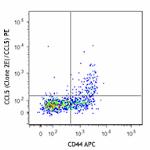
Overnight cultured C57BL/6 splenocytes were stained with CD8... 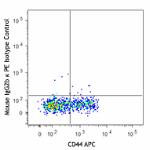
-
PE/Cyanine7 anti-mouse CCL5 (RANTES)

Overnight cultured C57BL/6 splenocytes were stained with CD8...
 Login / Register
Login / Register 









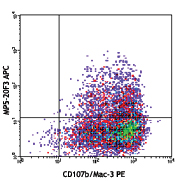
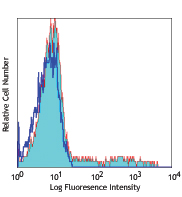
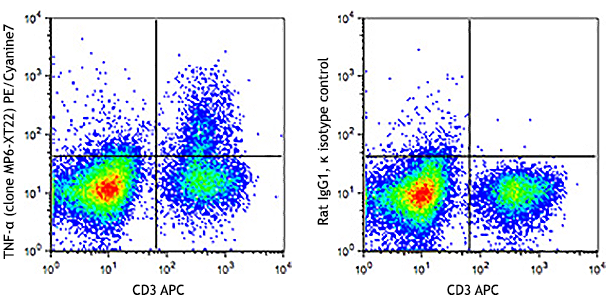
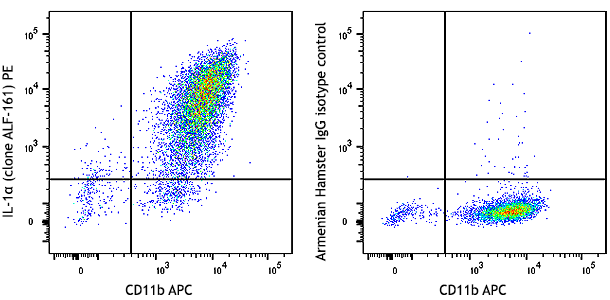



Follow Us